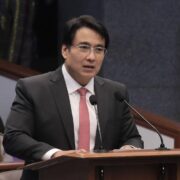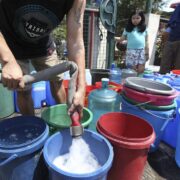Children will suffer more under climate crisis

Children are the living messages we send to a time we will not see.” When the scholar Neil Postman penned those famous words in 1982, I am sure he was not thinking of climate change. Amidst the backdrop of a warming planet, Postman’s words become ominous. If humanity fails to rise to the challenge posed by climate change, we are sending our children to a catastrophic future.
A recent study by Grant and coauthors published in Nature (2025) shows that our children’s future may be even darker than initially believed. They discovered that over 50 percent of children born in 2020 will experience “unprecedented” heatwaves over their lifetimes. For comparison, for those born in 1960, only 16 percent would experience such heatwaves over their lifetimes. These numbers assume 1.5 degrees Celsius of warming (the target of the Paris Agreement), which is looking increasingly beyond reach as greenhouse gas emissions continue unabated. Under a 3.5-degree Celsius scenario, which is perhaps more likely, more than 90 percent of children born in 2020 will experience unprecedented heatwaves.
In addition, the study reported that it will be worse for children in less developed countries, indicating generational differences and geographical and socioeconomic asymmetry of impacts.
Also this year, Save the Children, an international NGO, published a related study indicating that at a temperature rise of 2.7 degrees Celsius above preindustrial levels, about 100 million of the estimated 120 million children born in 2020 will suffer “unprecedented” lifetime exposure to extreme heat. However, if the community of nations somehow meets the 1.5 degrees Celsius target, about 38 million fewer children will endure such extreme heat.
In addition, the study revealed that keeping the planet at no more than 1.5 degrees Celsius warming means that about 8 million children would avoid unprecedented crop failures; about 5 million would be spared from unprecedented exposure to flooding; and around 5 million would avoid unprecedented exposure to tropical cyclones.
But we don’t have to wait decades into the future to see the effects of climate change on children. Several studies have shown that children are already feeling the heat. For example, Hickman and coworkers (2021) surveyed 10,000 children and young people across several countries, including the Philippines, to determine their perceptions of the changing climate. They found out that 84 percent were at least moderately worried, while almost 60 percent were very or extremely worried about climate change. About half of the respondents have felt sad, anxious, guilty, and angry. A nearly similar number said such emotions negatively affect their daily lives. Finally, and perhaps a bit of a surprise, the respondents feel that their governments are not doing enough to address global warming, adding to their distress.
As the number of studies and stories multiply on how children are being affected by climate change, we cannot ignore their message. And that message is that our young will bear a disproportionate burden of global warming,
What can we do? At the global level, we must continue to advocate for the global community to reduce the amount of greenhouse gases emitted to the atmosphere to a level that will keep the temperature rise to no more than 2 degrees Celsius. Our negotiators under the United Nations Framework Convention on Climate Change is leading this action.
At the same time, we can capacitate children to enhance their resilience even as we seek to amplify their voice in the climate discourse. On the former, education is a powerful way to prepare children by increasing their knowledge and awareness of the perils of and solutions to global warming. On the latter, government and civil society groups should look for ways to better understand and help communicate the needs of children.
In the country, Save the Children’s (Philippines) work is a good example of how NGOs can help accomplish the twin goals of preparing children for a warmer climate while ensuring that their voice is heard.
Reflecting on Postman’s words, our children may indeed be our living messages to the future. But what will be their message to a “time we will not see”? May it never be that our generation failed to act when we could and thus, they suffer.
—————-
Dr. Rodel Lasco is the executive director of the Oscar M. Lopez Center, a foundation devoted to discovering climate change adaptation solutions (www.omlopezcenter.org)

















Batang Pinoy and Baguio’s good governance